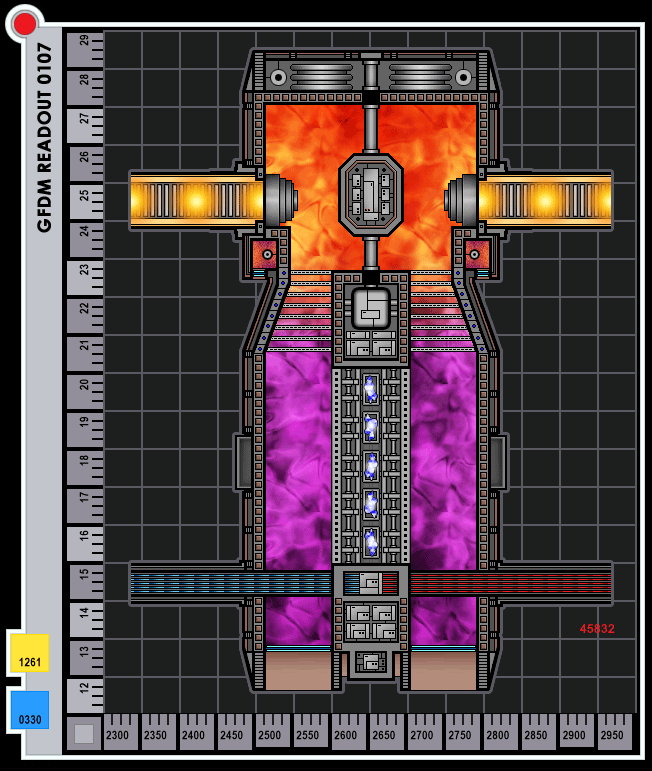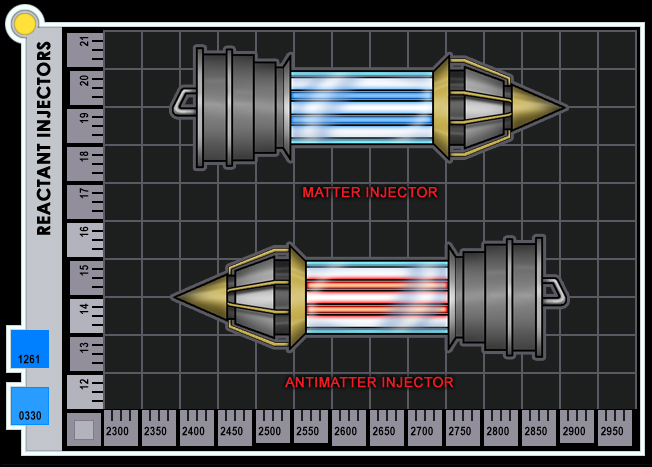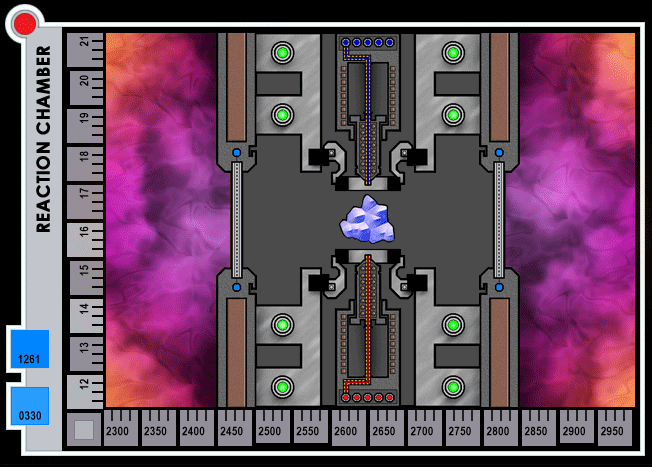test content
Logo
What is the Arc Client?
Install Arc
Testing the new picture feature.
 jocelynbrunel
Member Posts: 19
jocelynbrunel
Member Posts: 19

THE WARP FIVE ENGINE
"On this site, a powerful engine will be built... an engine that will someday help us to travel a hundred times
faster than we can today. Imagine it: thousands of inhabited planets at our fingertips. And we'll be able to
explore those strange new worlds... and seek out new life and new civilizations. This engine will let us go
boldly... where no man has gone before." ~ Dr. Zephram Cochrane, 2119
The key to modern and efficient space travel is the ability to combine superior warp field generation with efficient
power generation. Through key research and design, the Warp Five Complex has accomplished this task while
revolutionizing human space travel.
The Warp Five Complex was founded in 2119 in Bozeman, Montana by Dr. Zephram Cochrane and Henry Archer
with the goal of creating an engine that would transform our pioneering sojourns into the cosmos. Limited to a timid
warp two, much of our exploration was confined to a very small corner of the galaxy and local trade routes. Mankind
desperately needed something faster and more technologically advanced to really begin to explore. With that in
mind the team at the Warp Five Complex concentrated much of their research and development efforts into finding
ways to improving the efficiency and hardware of Cochrane’s original warp drive design. Through inventive
fabrication techniques, new research into metallurgy, computer control architecture and dilithium crystal research,
the Complex staff was able to produce a breakthrough, a functional Warp Five Engine.
This new technologically superior engine is rated with a maximum speed of Warp 5, a velocity of 37,474,057,250
meters per second or 125 times the speed of light. Its standard cruising speed is Warp 4.5. However, during the
first mission utilizing the Warp Five Engine, it was able to achieve a maximum speed of warp 5.06 making the NX-
class the first Earth vessel to achieve that velocity.
After the success of the Warp Five Engine, the staff and administrators of the Warp Five Complex have chosen to
forge ahead with producing new technological advances and research into warp field theory. After renaming the
Complex “The Theoretical Propulsion Complex” in 2154, the facility has gone on to make even more significant
breakthroughs in humanity’s warp drive technology. By concentrating research efforts on field coil refinement,
plasma acceleration and a more stable reactant injectors, the group have already begun refinement of the current
technology, allowing us to “boldly go” as Dr. Cochrane predicted.
THE GRAVIMETRIC FIELD DISTORTION MANIFOLD
Located on D Deck, the Gravimetric Field Displacement Manifold or Main Reactor Core is the primary power plant
onboard the NX-01. Its copper colored flattened cylindrical shape measures 1.5 meters high, three meters wide
and 7.5 meters long and occupies a special two story compartment just aft of the main computer core. The reactor
is broken down into three separate components; the dilithium manifold, reaction/transition chambers and plasma
containment vessel. Each separate component is contained within the core’s cylindrical shape by a shielded outer
hull approximately thirty centimeters thick.
THE GFDM OUTER HULL
The outer hull of the GFDM is made up of three separate layers; the outer skin, support trusses/insulating vacuum
layer and the inner shielding layer. Each layer is engineered to insure proper containment and maximum stability of
the reactor core.
The outer skin is composed of a copper-duritanium alloy approximately three centimeters thick. This outer layer is
designed to be a redundant safe guard against radiation while maintaining the structural integrity of the core
envelope.
The second layer, or support layer, is made up of structural braces and cross members used to form the core’s
rigid structure. These structural pieces are composed of ditanium and a special beryllium-titanium alloy both
formulated to withstand the heat and pressure produced by the core. To insulate against thermal variations the
empty spaces found between the structure and the outer skin are decompressed to form a vacuum.
The inner layer of the core, at fifteen centimeters, is the thickest and most important of the three. Constructed from
carbogermanium, this layer’s ceramic composite material is capable of withstanding high temperatures while
insulating against harmful radiation. Imbedded into this layer is a network of coolant conduits and magnetic
containment segments. The coolant controls the amount of radiant energy produced within the core and is fed from
below through conduits contained within reactor’s support struts. Coolant is moved through the system at fifteen
liters per second and is reduced or increased automatically depending on the reactor’s needs through a pumping
station located at the rear of the Engineering compartment. The magnetic containment segments safely maintain
the reacting plasma until it can be transferred to the nacelles or EPS grid for use. Composed of cobalt-boronite,
each segment produces an internally focused magnetic field capable of completely containing the plasma to within
twelve centimeters of the inner core wall. Each containment segment is also capable of maintaining a viable field
for a full nine minutes during a loss of power, allowing any remaining plasma to be carried away from the reactor
before full containment failure.
COMPONENTS OF THE GFDM
Located within the center of the reactor is the dilithium manifold. This area is approximately 1.5 meters high and
0.75 meters wide and houses the reactant injector assembly and dilithium articulation frames. To facilitate the
proper power generation, five separate dilithium crystals are used in concert. This configuration is required to offset
the small size of the available naturally occurring crystal and the impurities found within them. This section also
features its own redundant coolant systems, magnetic containment and maintenance drones.
The reaction/transition chambers are found on each side of the reactor core. These chambers contain and
modulate the continuing reaction and resulting plasma as it leaves the dilithium manifold. Magnetic transfer guides
are located at the top and bottom of the chamber to help move the plasma to the plasma containment vessel.
Residing at the back end of the reactor is the plasma containment vessel. This area is used to contain the filtered
and modulated warp plasma before it is carried by transfer conduits to the nacelles. The first stage plasma
injectors are also located in this area.

WARP POWER GENERATION
The main reactants for the Warp Five Engine are deuterium and anti-deuterium. The deuterium is held in two twin
tanks located in the warp farings on B Deck while the anti-deuterium or anti-matter is carried in four magnetic
containment pods on F Deck. Refueling of deuterium is made through two hatches located on the dorsal side of the
saucer. The Bussard Collectors, located in the nose cone of each nacelle, also collects interstellar hydrogen for
replenishment of the deuterium fuel reserves during missions away from refueling posts. Replenishment of the
anti-matter is done through special conduits located on the outer hull just adjacent to the storage pods. The
anti-matter storage pods are equipped with an emergency ejection system and can be launched away from the ship
through an explosive hatch located in the aft hull section of that compartment.
Before the deuterium can be fed into the system, the reactant must be heated and conditioned through several
magnetic and mechanical filters located on C Deck. Once the deuterium has been properly prepared, it is routed to
a tank located just starboard of the main reactor. But unlike the deuterium, for safety reasons, the anti-matter is
directly fed into the system from its storage tanks. Conditioning for this reactant is completed during the constriction
stage.
Once the system is activated the warp core is preheated to 10,000K and pressurized to 15,000 kilopascals. The
reactants are then fed into the magnetic constrictors by four pre-stage reactant injectors located along the starboard
and port bulkheads parallel to the reactor. The deuterium injector/constrictor assembly is located to starboard while
the anti-matter injector/constrictor assembly is to port. As the reactants are fed into the magnetic constrictors, the
constrictors begin to compress the matter streams and move them forward to the reactant regulator. This regulator
splits the streams into five separate reactant streams and routes them to the reactant injectors found just forward of
the reactor core.

Each of the five injectors introduces the focused and compressed matter/anti-matter into transfer conduits in small
amounts. The matter injectors are slaved together with a corresponding anti-matter injector and work
simultaneously so that the reactants will reach the dilithium manifold at the same time. Once the matter and
anti-matter is injected, the transfer conduits feed the reactants directly into the warp core through the forward
support struts.

Once the reactants reach the core, they are directed to the dilithium manifold and into a secondary reactant injector.
The reactant monitoring software then checks the reactant timings for anomalies due to acceleration or shock
forces and readjusts them to precisely match. The secondary injectors then fire the matter and anti-matter into the
dilithium crystal contained within the articulation frame. The dilithium crystal, while energized with a high frequency
EM field, allows the injected fuel to safely react with each other producing a plasma burst. This plasma is directed
away from the dilithium manifold by articulated magnetic fields into the reaction/transition chambers. A magnetic
grid separating the two areas prevents the plasma from back-flushing into the dilithium manifold. Once the plasma
reaches the reaction/transition chambers, any remaining unused fuel is allowed to react. Due to the impurities
found in the naturally occurring dilithium crystals, the reactants are not fully utilized within the crystal and minute
amounts of reactants must be burned off before the plasma can be redirected to the nacelles. The plasma is also
mixed together in this chamber to unify consistency. After these steps are complete, the plasma is then “pushed” to
the back of the chamber by the magnetic transfers and fed into a series of magnetic constrictors. These constrictors
align the plasma frequency and remove any stray positrons. These positrons are moved into a separate magnetic
holding tank, located on the outside edge of the plasma holding area, where they are accelerated and allowed to
react with electrons to dispose of them. The residual plasma is then dumped back into the system for utilization.
After the plasma passes through the magnetic constrictors, it is then moved into the plasma containment vessel.
Here the plasma is processed to remove any temperature anomalies and held until it can be directed into the warp
plasma conduits. At this point, the plasma is extracted in exact amounts, timed and pushed into the warp plasma
transfer conduits by the first stage plasma injectors.
PLASMA TRANSFER AND ACCELERATION
Once leaving the warp core, the plasma is moved through the power transfer conduits to the first stage plasma
accelerator located on C Deck. This two story magnetic centrifuge is used to speed up the plasma moving through
the system. As it receives plasma, it accelerates the bundle to three times its original speed and splits it into
smaller quantities before sending it on. For safety, the first stage plasma accelerator is located near the outer
dorsal hull. If the reactor was to loose containment, the remaining plasma would be shunted to the accelerator and
vented into space.
Once the plasma leaves the first stage accelerator, it is then moved by transfer conduit to D Deck and the second
stage accelerator. This accelerator speeds up the plasma twice its speed and again reduces the bundle size before
moving it to the third stage accelerator. This last accelerator is located just aft of the impulse engines at the base of
the nacelle pylons. The plasma speed is again doubled, reduced in size and pressure balanced before being fed to
the nacelles.
At this point in the plasma’s journey, the starboard and port transfer conduits are opened up to each other. This is
required to balance the warp plasma pressure before it is transferred to the nacelles. Utilizing conduits built into the
structural support bridge between the two warp farings, the plasma conduits are allowed to converge in a holding
tank, located in the middle of this structural bridge, before being redirected back to the nacelles. This procedure
balances any differences in plasma frequencies and speeds due to variations in acceleration forces, gravity and
energy distortion during the transfer from the main reactor. This procedure is necessary since the nacelles are
required to work in perfect concert to maintain a stable warp field.
Once the accelerated plasma reaches the nacelles it is brought to the front of the nacelle, split into two redundant
streams and moved through specialized transfer conduits running parallel to each other, fore to aft. Located along
the centerline of nacelle and between the transfer conduits are eighteen dedicated plasma injectors, each
corresponding to a specific set of warp coils. These injectors are used to power the field coils. Excess plasma, or
plasma not used by the warp nacelles, is shunted back into the EPS system, used to augment the impulse engines
or, in emergency situations, vented into space.
SUBSPACE FIELD GENERATION
Located within the main body of the nacelle are the warp coils. These coils are composed of cortenide surrounding
a core of densified tungsten-cobalt-magnesium. This special composite of minerals has the ability to generate a
focused subspace field when exposed to high frequency plasma, depending on the amount of plasma introduced.
The subspace field “bubble” that is produced by the coils pushes the ship out of normal space and into subspace,
allowing the vessel to break the light speed barrier.

When the warp engines are engaged, the plasma injectors pull a predetermined amount of plasma from the
transfer conduits and then inject the plasma into the open space within the center of the warp coils. This plasma is
then absorbed by the coil and a burst of subspace energy is then released outward into space, with the shape of
the coil producing a specifically shaped field bubble. This process is repeated beginning with the aft coils and
moving forward through the nacelles. To achieve forward motion, plasma amounts are varied in such a way that
each set of warp coils produces a different opposing frequency and the resulting field repulsion propels the vessel
forward. By increasing injection speeds within the warp core, plasma accelerators and plasma injectors, the vessel
can increase its forward speed.
For more information about the ideas used behind the scenes to create warp technology, warp factors and
subspace mechanics, please visit the amazing Star Trek Wikipedia Memory Alpha or the ultimate reference site
Ex Astris Scientia.
Post edited by jocelynbrunel on
0
Comments
Compiled List of Bugs, Issues, and QOL Concerns for Champions Online
Get the Forums Enhancement Extension!
All credits go to the guy who made this: waxingmoondesign.com/OverviewPage.html
My compliments for the idea OP, in this place where it's becomming increasingly difficult to encounter something more than bickering your thread is like a ray of light.
Well, the idea about the pic in my sig is that it's a loop. If you know the episode of TNG, you'll understand what I mean.
It was just a test to see what the new forum engine can handle. So far it's really good.
I Support Disco | Disco is Love | Disco is Life
Yes, this truly is my favorite part of Vanilla.
I think this one is going to get a lot of usage.
Or maybe Trendy can use the hammer.